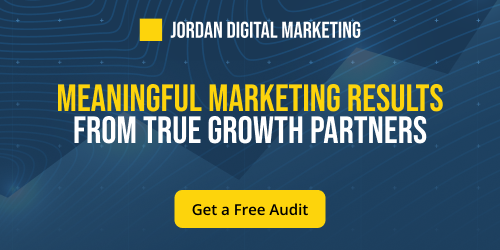Meta’s Advantage+ suite continues to evolve, and Q1 2025 has brought a flurry of updates that promise to make AI-powered campaign management more efficient—and potentially more effective—for marketers. At JDM, we’re always interested in exploring how these new tools impact real-world performance and campaign management.
Here’s our take on the top Advantage+ updates of the year so far: what’s working, where we’re testing, and what to keep in mind as you explore these tools for your accounts.
1. Advantage+ Campaign Setup Expansion
What’s New: Advantage+ campaign setup is now available across Sales, App, and Lead objectives. All three can now benefit from AI-powered optimization from the jump.
Why It Matters: This rollout simplifies campaign setup, especially for marketers who may not be as experienced with granular targeting. You can lean more heavily on Meta’s machine learning to identify audiences and optimize in real time.
JDM POV:
We’ve already seen notable CPA improvements from switching regular App campaigns to their Advantage+ counterparts, so we expect similar gains across Sales and Lead objectives. If you’re already running manual campaigns with these goals, this is a low-lift way to test performance gains using Meta’s AI.
Recommendations: Start by duplicating a current manual campaign and test the Advantage+ version with a modest budget that returns actionable data without going all in. Give it enough time to learn before comparing performance. Don’t switch off the original campaign until you’re confident in the new results.
2. Shop Ads with AI-Powered Product Expansion
What’s New: Shop Ads can now automatically display products outside your preferred product set when the algorithm identifies higher engagement potential.
Why It Matters: This change aims to boost engagement by introducing more relevant items—even if they weren’t your initial picks.
JDM POV:
This could be a win for engagement, but we’re approaching it with caution. Relevance is key, and while Meta’s AI is impressive, it doesn’t always understand brand nuance or customer intent.
Recommendations: Test on a small scale to evaluate how accurately the AI predicts user interest. If CTR or ROAS improves, it might make sense to scale the feature more broadly.

3. Opportunity Score Expansion
What’s New: More advertisers now have access to Opportunity Score, a tool that provides AI-driven campaign optimizations ranked by predicted performance impact. Each recommendation includes context, expected outcome metrics, and simple implementation steps.
Why It Matters: This is especially useful for less experienced campaign managers, who can now lean on AI suggestions for improvements without diving into the weeds.
JDM POV:
It’s a time-saver for QA and ongoing optimization—but with a caveat: not every recommendation will make sense for every client. Just as with Google’s Recommendations tab, we advise reviewing each suggestion carefully before implementation.
Recommendations: Check the Opportunity Score weekly as part of your campaign maintenance routine. Don’t auto-apply changes. Use them as a jumping-off point for tests and optimizations that make strategic sense.
4. Generative AI Tools for Retail/Ecomm
What’s New: Meta has expanded generative AI tools for retail brands, including:
- Background generation for catalog creatives
- Improved AI-powered text generation
- A new “virtual try-on” experience for clothing
Why It Matters: These tools aim to improve creative engagement—one of the biggest levers for performance—without requiring massive production budgets.
JDM POV:
We’ve had limited success with background generation so far due to compatibility issues, and we haven’t tested the text generation tools yet. That said, they’re worth exploring—just be sure to get client approval on copy before testing.
The virtual try-on tool is a fun enhancement. It’s unlikely to hurt performance, though its impact on conversion rates might be more subtle than expected.
Recommendation: Test these tools if you have compatible creative assets, but don’t rely on them out of the gate. There’s no harm in experimenting since you’re not obligated to use the generated content if it doesn’t meet quality standards.
Caveats
None of these updates are “must-use” across the board—but they’re worth testing. As with any new feature rollout, we suggest:
- Testing at a small scale first
- Giving enough time for learning and optimization
- Keeping your original campaigns live during the test phase
Meta has been leaning hard into Advantage+, and we expect this to be their primary campaign format moving forward. If performance proves strong, we recommend transitioning from manual campaigns to Advantage+ to stay ahead of the curve.
What We’d Still Like to See from Meta AI
If we could wishlist one AI feature from Meta? Audience recommendations. Right now, Advantage+ targeting is a black box. You can’t see who you're targeting—and that’s fine, to a point. But we’d love the ability to upload a customer list and receive enriched insight (beyond Audience Insights, which lacks many targetable behaviors and interests) into what demographics, behaviors, or interests those users share. That could help guide targeting outside of Advantage+ and inform broader strategy.
Overall, Q1 2025’s Advantage+ updates are a solid step forward in automating campaign setup and performance tuning—especially for advertisers who need support in scaling quickly. With the right guardrails in place, these tools can be powerful allies in your Meta ad strategy. Just be sure to test smart, optimize intentionally, and always keep the client’s goals front and center.